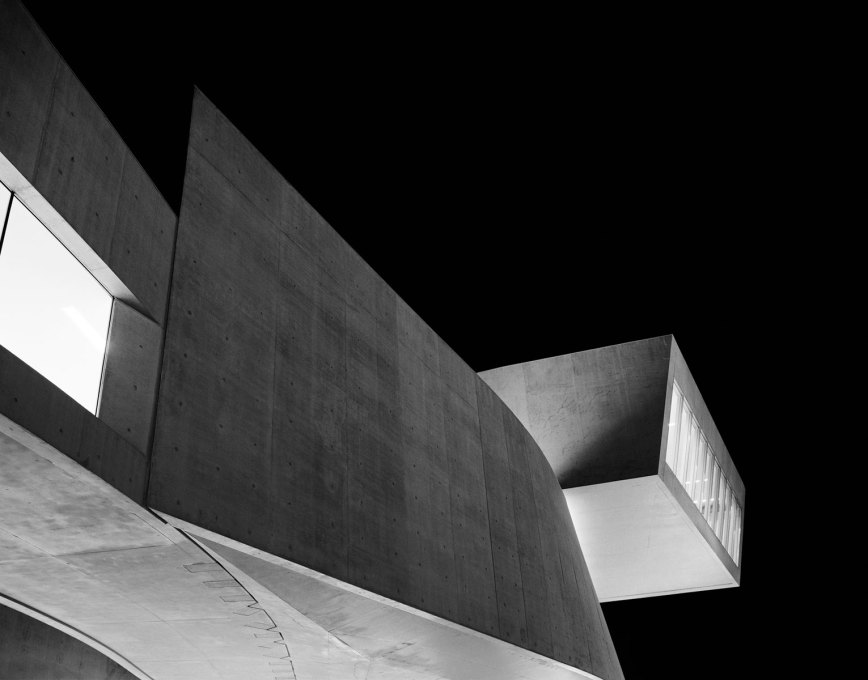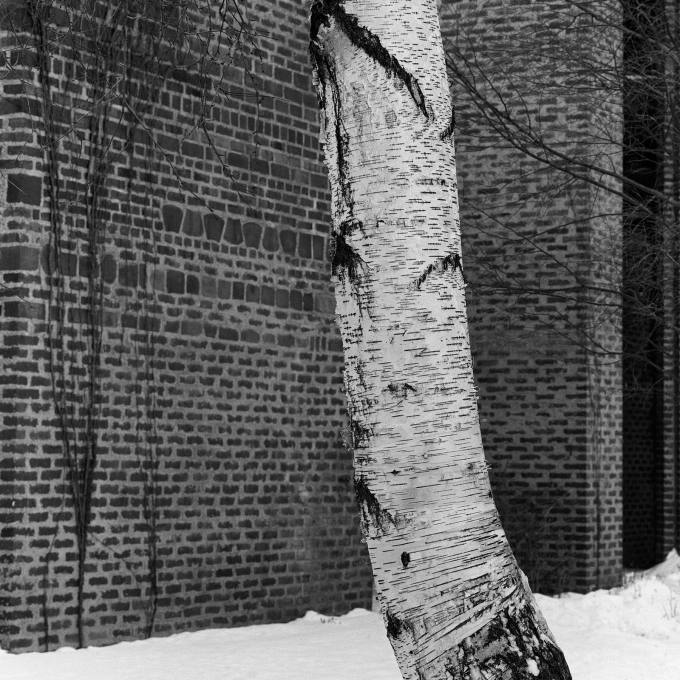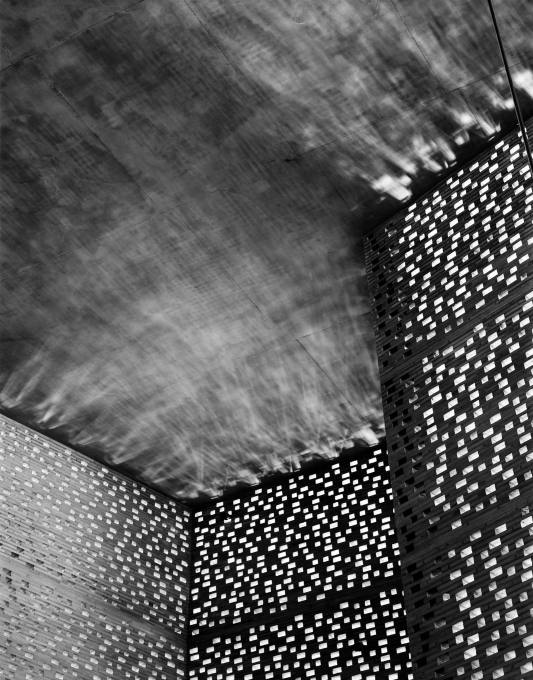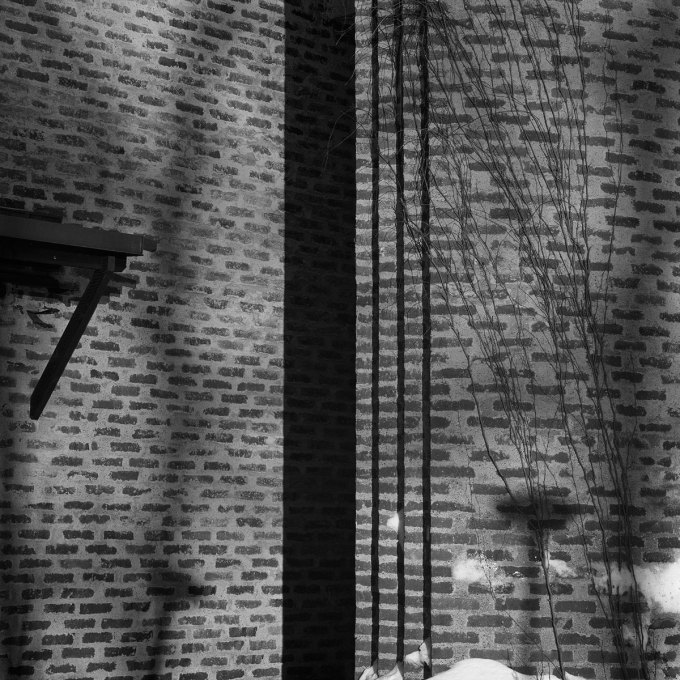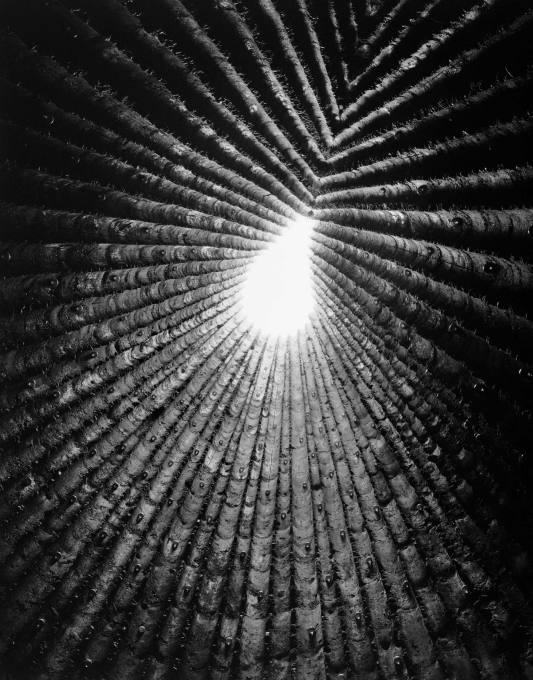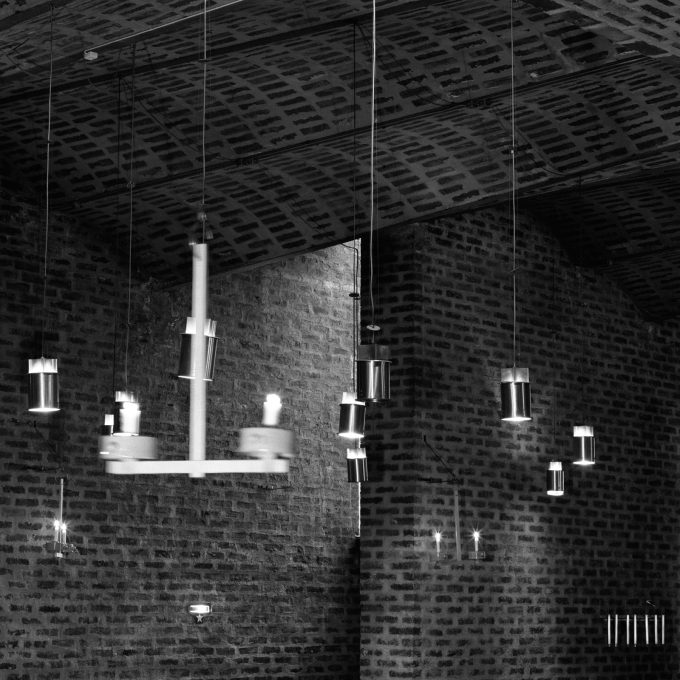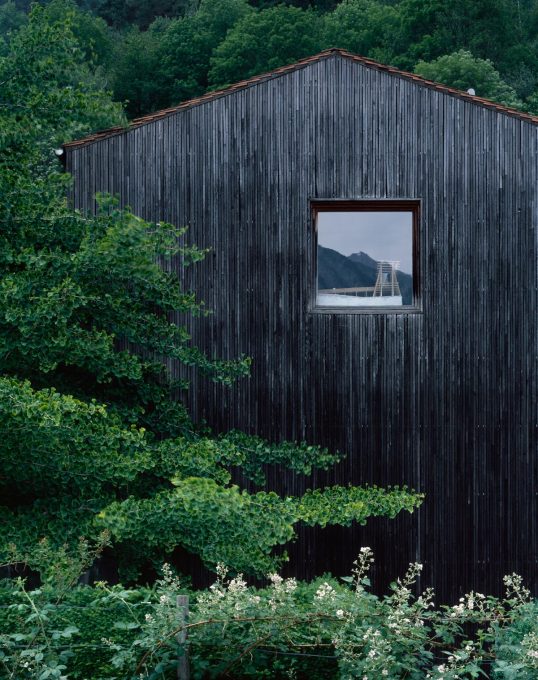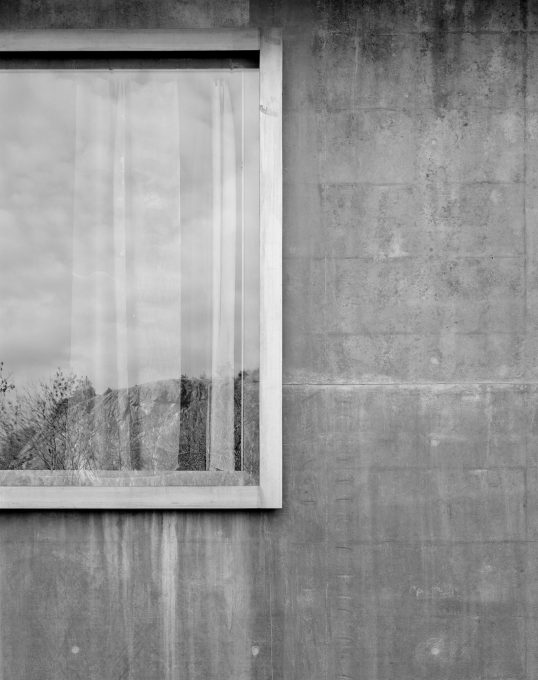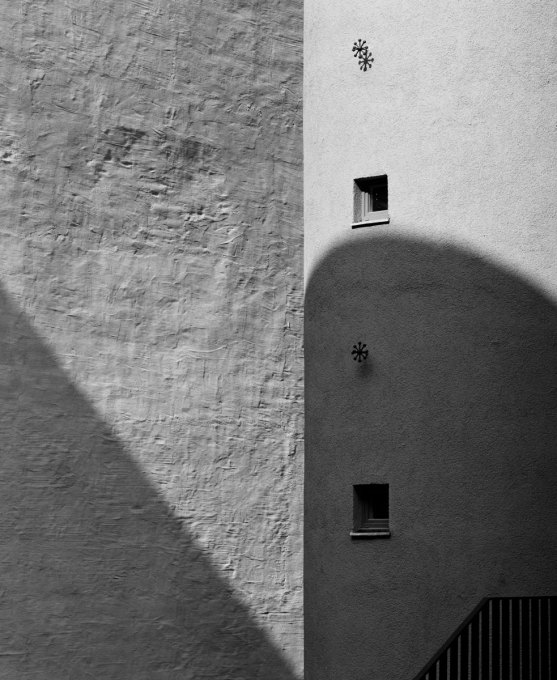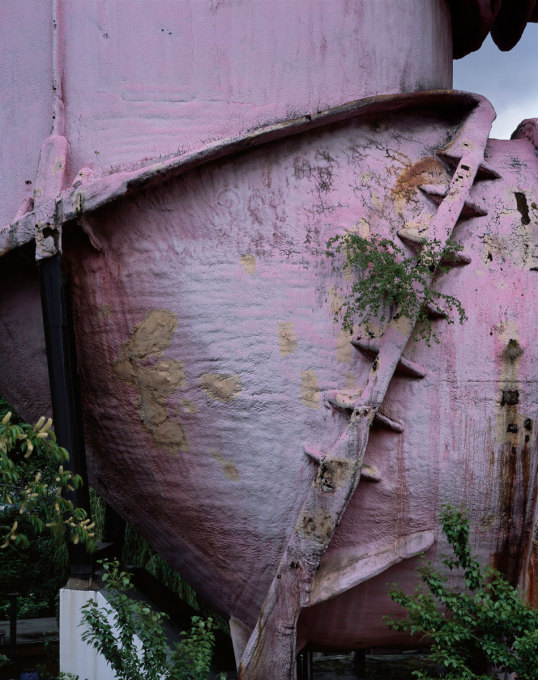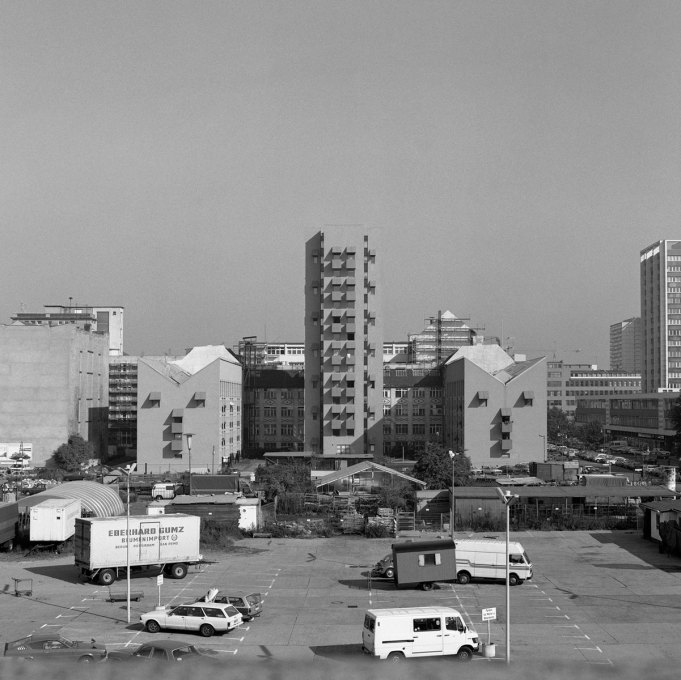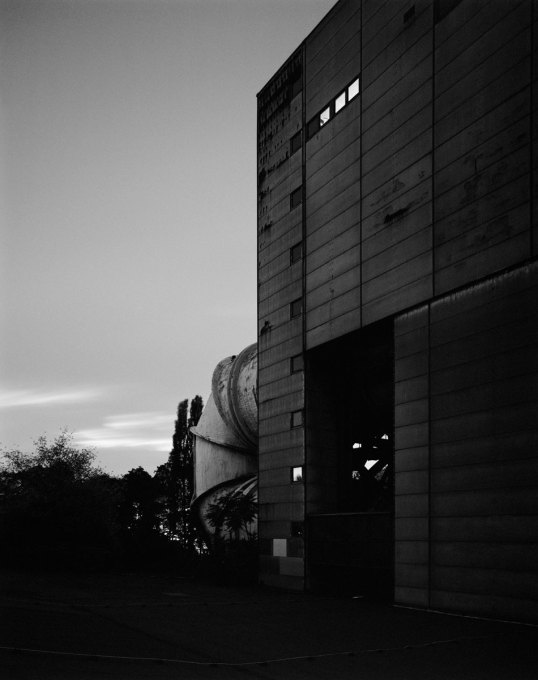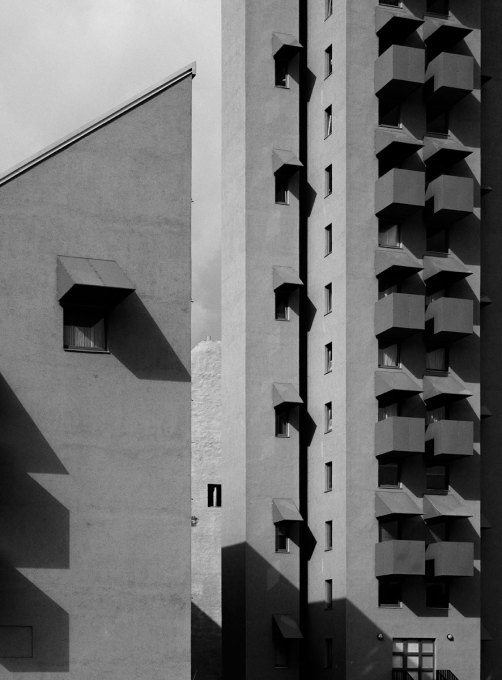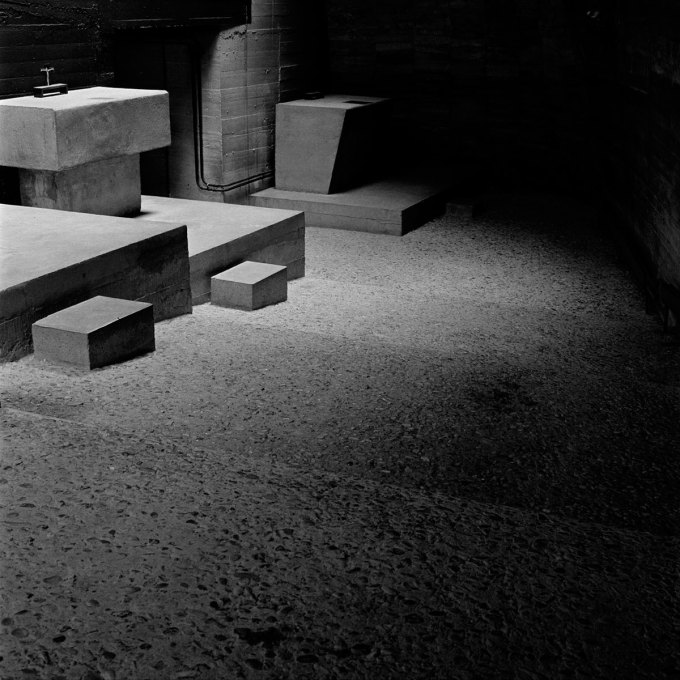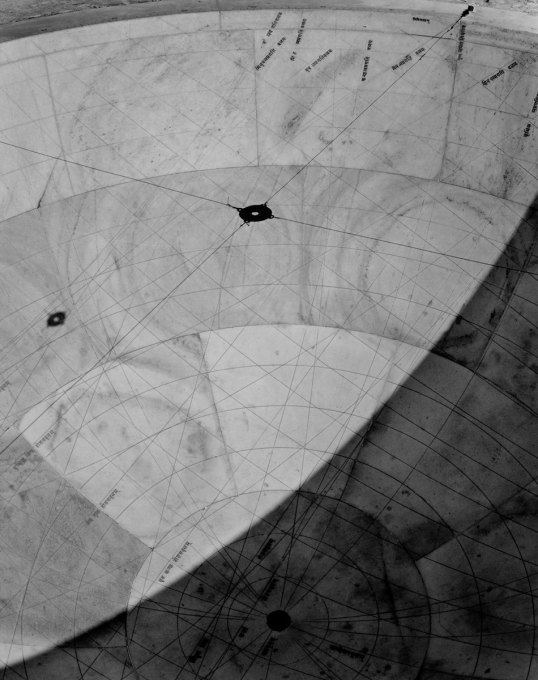Hélène Binet is known as one of architecture photography′s brightest stars, frequently sought out by famously exacting starchitects to portray their work. Dialogues, a self-curated exhibition of her work currently on show in Berlin, reflects the very personal and intensive sensitivity of her powerful black-and-white images. The show combines images of famous contemporary buildings with lesser known works of historic buildings or landscapes – resulting in the eponymous “dialogues” between the different images and the different architectures. uncube editor Florian Heilmeyer went to the exhibition, and met up with Binet to ask about her very specific attitude to photography, and the “severe subtraction of reality” that her chosen medium represents.
It’s remarkable how unusual it feels to enter an exhibition with almost solely black-and-white images. Coming from the constant stream of colour images we are bombarded with today, this mainly monochrome show lends even the contemporary architecture represented within it an historic distance – an aura perhaps. Or maybe “historic” is the wrong word, especially when these buldings are juxtaposed with images of others that are more literally historical, such as Le Corbusier’s La Tourette from 1960, Sigurd Lewerentz’s St. Mark’s Church in Stockholm from 1956 or John Hejduk’s Kreuzberg Tower in Berlin from 1988. Add images of the 18th century Jantar Mantar observatory in Jaipur, India, and some spectacularly calm photos of the Atacama Desert in Chile, and “historic” starts to become more timeless; eternal even.
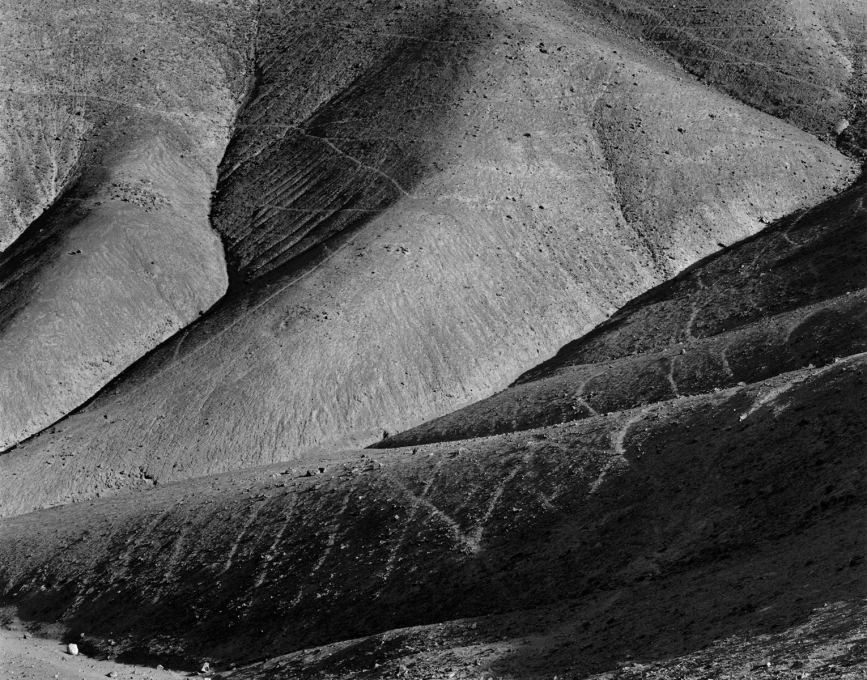
Dialogues – Photographs by Hélène Binet, currently on show at the Bauhaus-Archive in Berlin, brings all these very different subjects together in an intense presentation curated by the photographer herself. For over 25 years now, Binet has been taking images of – mostly famous – buildings, and in all this time she has never changed her method. She is still completely bound to analogue photography, spending days and days on-site before deciding which specific aspect of the building to shoot and when, then taking just a few images which she develops and prints herself. “Photography is still handcraft to me”, she explains, standing in front of her images in the exhibition space. “With digital photography, I would always be thinking about how to change the images later. Thus I wouldn’t be really present. But my work is about reduction, about concentration and focus. I absolutely cannot change this way of working.”
It is Binet’s distinctive slow gaze fixed upon these buildings and structures that is revealed to us in this exhibition. Hers is a focused way of working which has nothing to do with the neutral documentation of buildings. This results in the most intimate of portraits, showing fragments and glimpses of the architecture. They are very personal impressions and atmospheric moments. “A photograph will never show you the real experience anyway”, says Binet, knowing the limits and restrictions of her medium. “You are subtracting every other sense like smell, touch, noise, temperature after all: photography is such a severe subtraction of reality already.”
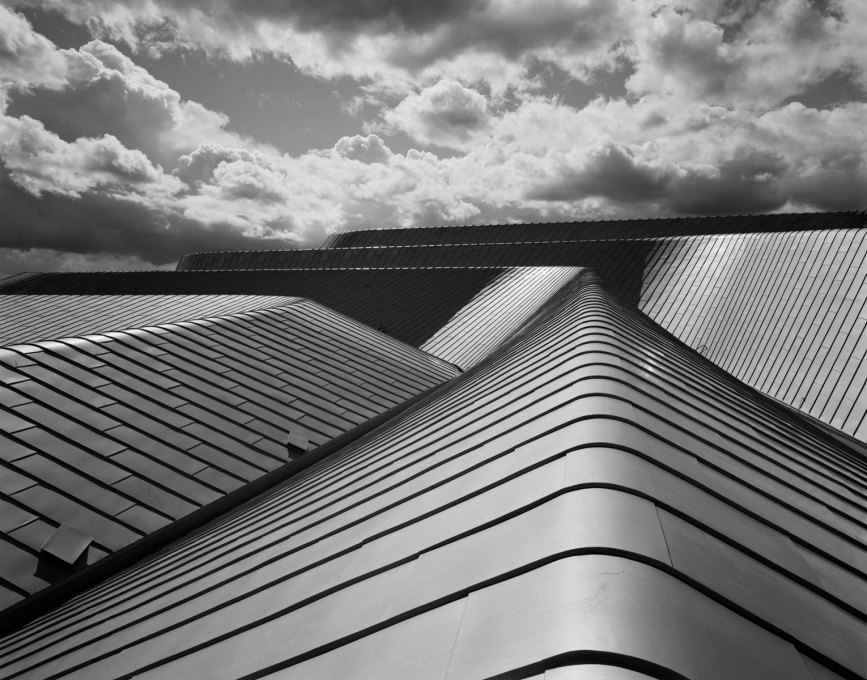
“Photography is about a framing of the world in order to examine particular aspects”, she continues. “In the process links and dialogues develop between materials, lines, light and shadow, pictorial planes, forms and structures, which becomes a world of their own, with their own history.” Realising this, Binet juxtaposed different architects and buildings, placing them, quite literally, in a spatial dialogue with the exhibition space. In the gallery visitors encounter her images of Le Corbusier’s La Tourette on the one side of the room, while glimpses of the Jantar Mantar hang on the opposite wall. Some of Zaha Hadid’s buildings are placed opposite the curving forms of the Chilean desert, Ludwig Leo’s Umlauftank corresponds with John Hejduk’s housing scheme, and Sigurd Lewerentz’ church finds itself in direct dialogue with some of Peter Zumthor’s buildings.
It sounds a heady mix, but fortunately Binet’s dialogues are rather subtle and loosely composed. With each subject – be it one specific building or a particular landscape – the format and number of images on the wall change according to what Binet wants to say about it. This leaves it to the visitor to choose whether to follow the (loosely) connecting “dialogues” across the room or not.
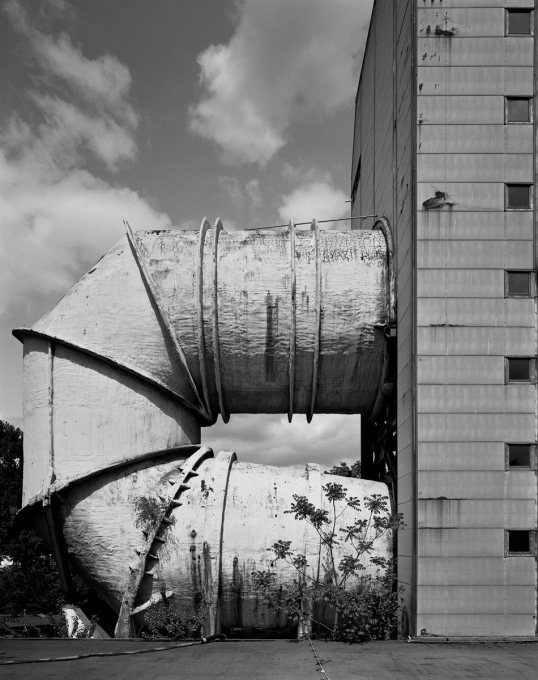
“Something that still fascinates me very much is the power of human fantasy”, says Binet. “Even as little children we are able to create unbelievable spaces and places in our dreams and in our minds.” It is this power of our own imaginations that are being explored in this exhibition. Binet is very consciously putting a frame around something real, subtracting from it every other human sense besides the visual and then revealing to the eyes of the viewer only a very specific angle, situation or fragment. Binet’s “dialogues” actively steer our thoughts to the rich realm that lies beyond the frames, inspiring our imaginations to elongate the lines, the light and shadows beyond the limitations of her images. In a very intelligent and reluctant way she leads us to question what she shows us and why she shows it. She is guiding us towards questions that are of great importance in these times of heavy media saturation, when we so often take as truth that which we’ve only seen as images.
Hélène Binet (*1959 in Sorengo, Switzerland) comes from a Swiss and French background. She currently lives in London with her husband Raoul Bunschoten and their two children. She developed an interest in architecture photography early in life and studied photography at the Instituto Europeo di Design in Rome, where she grew up.
Dialogues – Photographs by Hélène Binet
until 26 October 2015
Bauhaus Archive Berlin
Klingelhöferstrasse 14
10785 Berlin.




